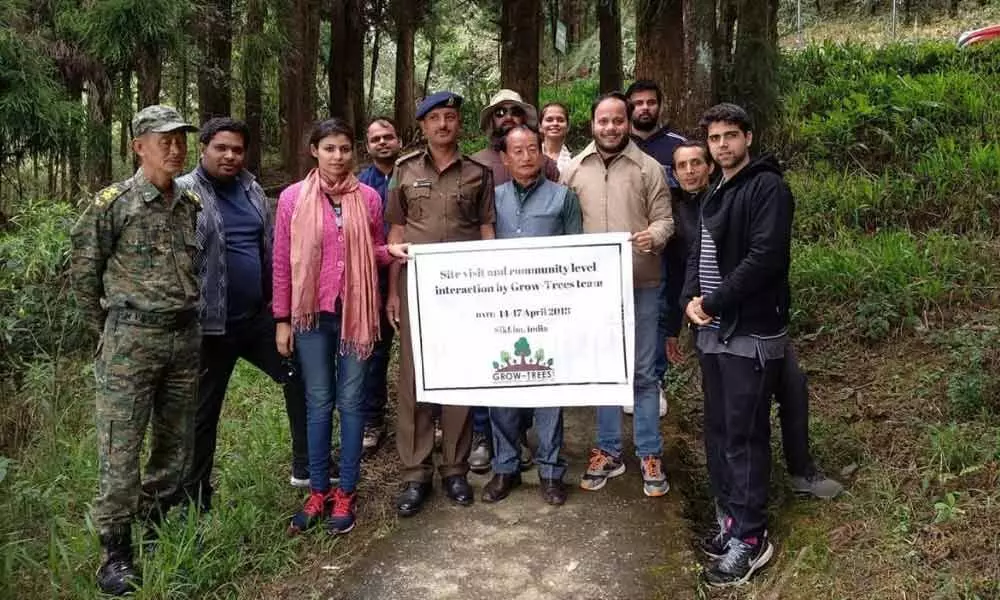Battle Against Climate Change Must Protect India's Endangered Flora and Fauna: Expert

Battle Against Climate Change Must Protect India’s Endangered Flora and Fauna: Expert
As India celebrated World Wildlife Day this month, an inferno continued to rampage across eight of the 21 forest ranges of Odisha's Similipal National Park.
As India celebrated World Wildlife Day this month, an inferno continued to rampage across eight of the 21 forest ranges of Odisha's Similipal National Park. It continues to endanger mammals, amphibians, birds, butterflies, and over 94 species of orchids and many indigenous trees specific to the region. But this disaster is not an exception as more than 36% of Indian forest cover is prone to frequent forest fires, according to a Forest Survey of India (FSI).
This coupled with rapid deforestation has endangered India's flora, which is one of the richest and most diverse in the world. Experts estimate that there are over 18,000 species of flowering plants and more than 50,000 species of plants, including endemics in the country. India's forest cover also ranges from the tropical rainforests, grasslands, deciduous and coniferous tracts with a wide variety of pine, fir, spruce, cedar, larch and cypress trees lending to India's indigenous biodiversity.
Says Bikrant Tiwary, CEO of Grow-Trees.com, "This rich biodiversity is thanks to the wide range of climate variations, topography and habitats in India. It goes without saying that we must protect these indigenous ecosystems and the rural communities dependent on them."
He attributes heedless afforestation to the rapid rate of urbanization and development activities which result in indiscriminate felling of millions of trees for infrastructure, mining, or other industrial projects. He says,"In an attempt to develop at the pace of the West, we seem to be overlooking the impact of our actions on the environment and wildlife. The encroachment of forests has led to a loss of wildlife habitats because of which several birds and animals have been declared 'endangered' or 'vulnerable' by IUCN (The International Union for Conservation of Nature). Hyper modernization has also tabooed traditional beliefs and practices of tribal communities that honoured trees and wildlife. We need to be sensitive towards the fact that the forests that we exploit for commercial purposes are a haven for tribal communities and wildlife. It is critical to encourage sustainable practices."
To rectify this, Grow-Trees.com has set up projects across India to address issues that are most relevant to a particular district or region. For instance, projects that fall under 'Trees for Forests and Wildlife' are established to enhance natural habitats of endangered wildlife species like tigers, sun bears, sloth bears, Indian giant flying squirrels, etc.
Such projects will not only lead to an increase in the forest cover and prevent sediment starvation but also provide livelihood opportunities to locals. Many projects have also been launched in the villages of Madhya Pradesh, Rajasthan, Jharkhand, and Maharashtra to save the dwindling population of tigers. Project-Trees for Elephants in Singhbhum, Jharkhand involves the plantation of 750,000 trees to expand the forest corridor and restore the elephants' migration routes. This will also significantly benefit the Santhal and Mundal tribes in this region. In Mussoorie, Uttarakhand , the plantation includes direct community involvement while generating local employment to support the sensitive rural economy.
As Bikrant says, " Such projects are extremely crucial in preserving India's natural heritage and supporting the country's local communities. The Project-Trees for Villagers in Kolar-Chikkaballapur, Karnataka for instance has provided over about 35,000 workdays to the rural communities so far.
India's rich biodiversity has suffered the most at the hands of urbanization and human activities. It is up to all of us to preserve the inherited treasure of India's natural environment for future generations. "







